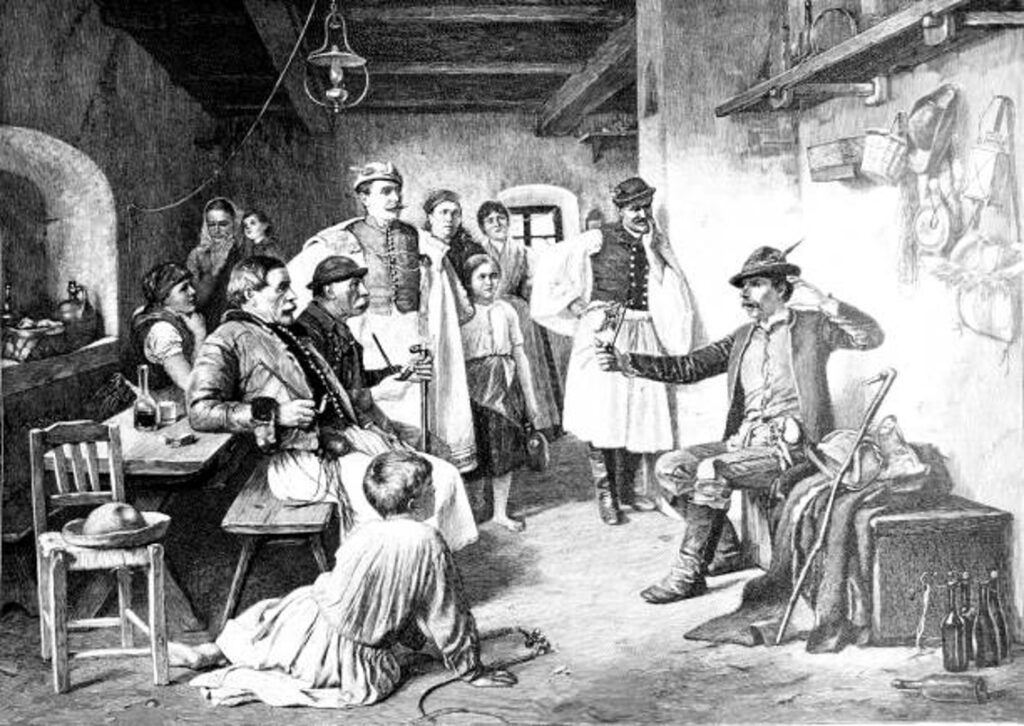Topic 4 Marketing of Local Heritage
As a key part of our past histories and of our current economies, it is important to market our local heritage in a positive and attractive way. In this section, we will look at some ideas that could be included in a marketing strategy for the promotion of local heritage to achieve this.
Storytelling:
Long before reading and writing, storytelling was the method of passing on our histories and traditions. Storytelling exists across all different cultures and ages and consists of gestures as well as voice. The tradition of storytelling varies from place to place but can include the use of songs, poems and rhymes. Although the art of storytelling is used to inform, many stories that are told in this way are not factually correct, as there is an emphasis on entertainment in cultural storytelling, and is often based on fables, myths, and legends. The ‘Seanchaí’ were the traditional keepers of stories in Ireland and would travel across the island to recite their tales as well as spread local news. Storytelling is still used in Ireland today to promote local heritage and customs, with guided tours of entertainment proving very popular with tourists.
For more examples of storytelling as a method of passing down cultural traditions, visit National Geographic.

Local heritage projects can mean much more than just preserving and protecting artefacts of the past. For example, in Ireland, the Heritage Council’s work includes the encouragement of local communities to take responsibility for, and participate in, the development and conservation of their heritage. As part of this, projects that will enhance local heritage and have the potential to revitalise neglected areas are important. These projects help to provide opportunities for local people to ‘review, re-engage with and re-interpret their heritage’. Heritage projects can generate a sense of belonging in local areas and bring a sense of pride to residents through increased participation. In turn, this means that local people will promote their heritage in several ways, such as through social media and word of mouth.
Becoming known for a specific exciting event that takes place at a set time each year can help to boost tourism and the development of local economies. These events can put certain heritage sites on the map and attract visitors from across the world. For example, Rio De Janeiro is famous for its Mardi Gras festival which is held every year before Lent while Oktoberfest is held annually in Germany and attracts thousands of overseas visitors. Kells, a little town in the county of Meath in northeast Ireland, is famous for its cultural traditions and many heritage sites, including the High crosses, Spire of Lloyd (Ireland’s only inland lighthouse), and the Book of Kells, which dates back to 800AD. As well as having these heritage sites and artefacts, Kells is also known for its annual events and festivals that draw in thousands of visitors each year and help to boost the local economy. Such events include the annual Road Races where motorbike racers and enthusiasts gather in Kells each year for this series of racing competitions, and the annual Hinterland festival, which is centered around national and local art, poetry and film. Events like these can help to increase awareness of local heritage and enhance the local economy.
Sustainability focuses on preservation, which is the mission of most heritage sites that aim to preserve culture and history. Raising awareness of sustainability and actively implementing it among tourists and locals alike can have a positive effect on local heritage. Not only will implementing sustainable practices enhance the local heritage that you are trying to market, but also it can increase tourist numbers and attract positive media coverage. In today’s world, people are more ethical and caring towards protecting the climate, the environment, and all of its inhabitants, and tend to have a greater interest in visiting places that share similar values and beliefs.
One of the best means of marketing is word of mouth. We want our customers to share their positive experiences of our local heritage with others and spread the word for us. In order to achieve this, we must provide lasting memories for visitors. For example, the use of storytelling in guided tours will make them more memorable, or allowing them to experience culture and history will create lasting impressions. One such example of this would be involving tourists in a historic reenactment whereby the experience is created for them (e.g. – the Salem Witch trials in Massachusetts, or the Viking Experience in Norway). This provides opportunities for them to make lasting memories, which they can share with others – known as experiential marketing. Customer satisfaction will guarantee good promotion for local heritage and businesses alike.